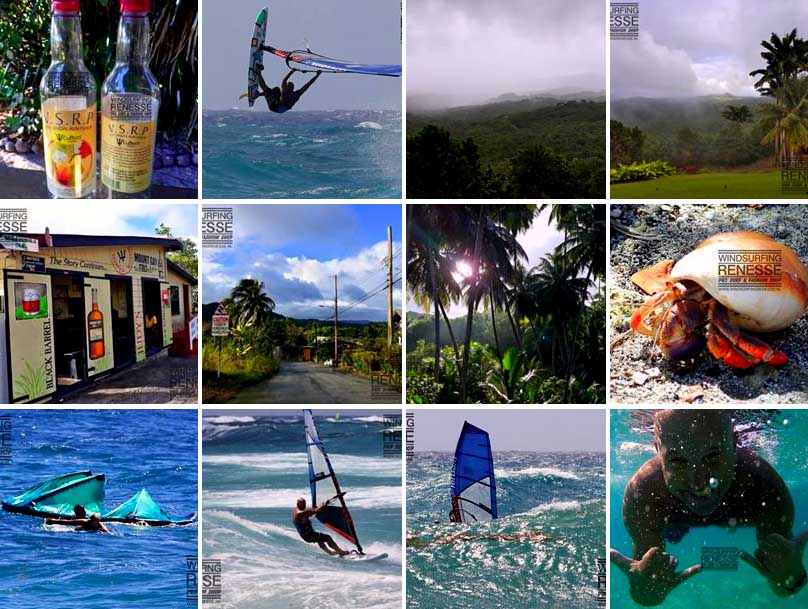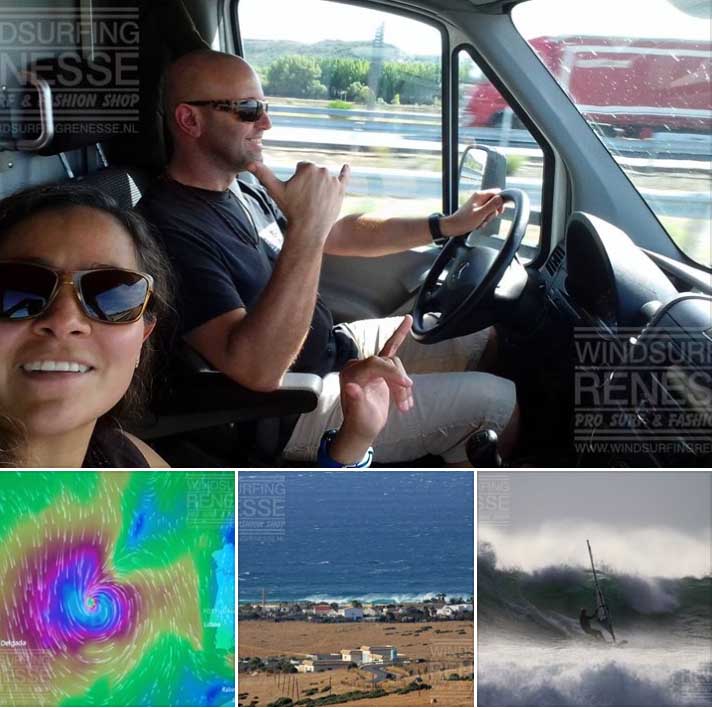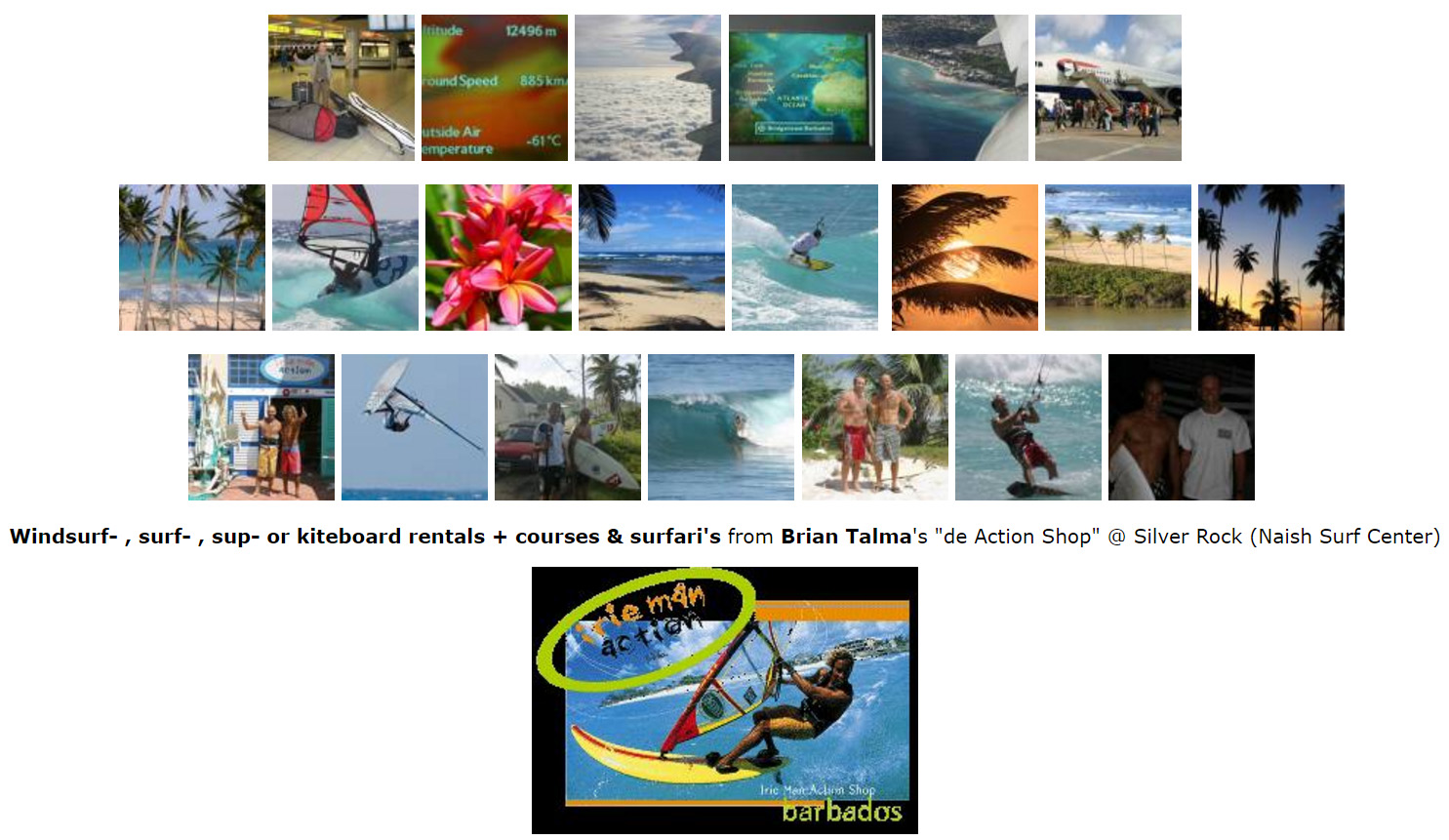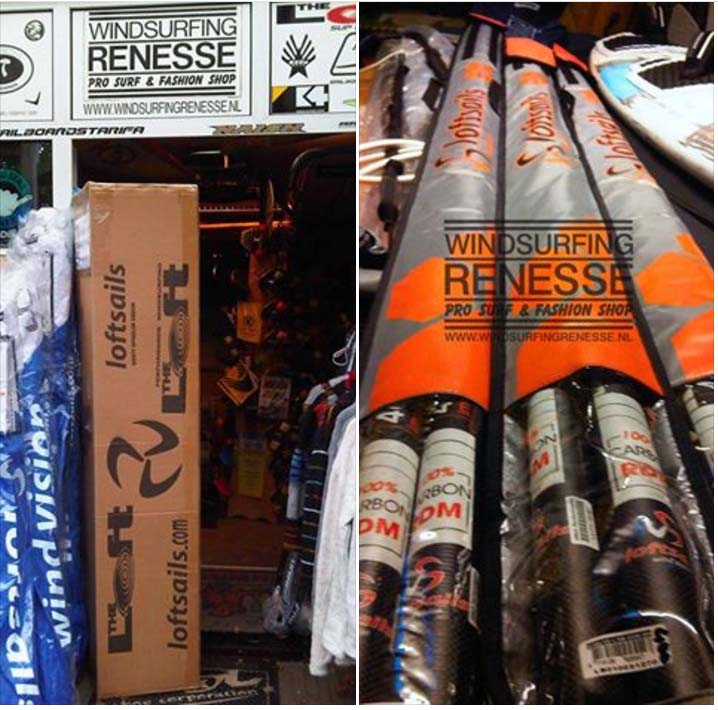Barbados general info:
| Many companies offer guided tours which can take you on your own chosen route, or follow a set itinerary. Alternatively, some hotels may arrange sightseeing tours for their residents. For organized tours, Island Safari Barbados takes visitors in 4x4s to many beautiful spots on the island inaccessible to other coach tours. The company runs tours in Land Rovers, and follows routes that take in some breathtaking views of the Scotland District and the craggy east coast. Also, try Chalene tours, which runs day trips taking in some of the main sights of the island, including Farley Hill, Bathsheba on the east coast, and Sunbury Plantation House. EL Scenic Tours runs more inexpensive tours, which cover only a few of the island’s hot spots. If you’re interested in seeing Harrison’s Cave, for instance, EL runs a tour there for a very reasonable fee. For a do-it-yourself tour, contact Johnson’s Stables, a company that will rent a car and driver for a half day. Boyce’s Tours do the same, and with both companies, groups can plan your own itinerary. | |
| In Bridgetown or on one of the busier beaches on the west or south coast of Barbados, you’ll be hard pressed to find a very quiet spot. As you head farther out of town or along each coast away from the city, the crowds thin out, and it is possible to find places of solitude. The east coast beaches tend to be more solitary, as the waters are too dangerous to swim in. Try Bottom Bay, Bathsheba, or Cattlewash. Getting to the east coast you will pass through small villages and hamlets which may offer quiet spots. Also, try one of the parks or gardens, such as Welchman Hall Gully. The least quiet time of year is December and January, or the high season, when more crowds mean less chance for a quiet spot. Try visiting Barbados during the mid to low season (February to November) for a more relaxing environment. | |
| The Vista Cinemas at the foot of Rendezvous Hill in Christ Church is a popular spot for movie-goers. Steps away from restaurants, bars, and the beach, it’s very conveniently located, and shows recently released movies (a few months after they come out in the U.S.) Also popular among the local crowd is the Globe Drive-In, a bit out of town in Christ Church. The Globe Cinema, nearer the center of town than the drive-in, plays a lot of action and kung-fu movies, and is popular with a certain segment of the local population. | |
| Food is an important part of Bajan life, and the booming tourist trade has brought a slew of dining establishments ranging from moderate, decent food to excellent fine dining. Seafood abounds on menus, as is to be expected, with dishes made from snapper, barracuda, dorado, shrimp, and lobster. Another fish eaten in many Barbadian homes is flying fish, a small delicious fish that is easy to filet and cook. A great place to sample flying fish is at the Oistins Fish Market, where every day-and especially on Fridays-there are flying fish vendors cooking up the tasty treat. West Indian dishes are heavily influenced by their African heritage, and involve such staples as peas, rice, beans and okra. A typically Barbadian meal might include cou-cou, (cornmeal and okra mash served with saltfish) typically served on Fridays, and pudding and souse, which is steamed sweet potato and pickled pig’s ear usually reserved for a meal on Saturday. You’ll have to look hard for these dishes, as most of the finer restaurants feature menus with an international flavor to appeal to the visiting tourist. There are so many fine restaurants from which to choose, it’s difficult to know where to begin. The Cliff is thought to be the best restaurant on the island. Situated on a cliff in St. James, a view of the sea is available from every table. Food is exquisite but very expensive, so consider this if you’re going to splurge. Also on the west coast is the Restaurant at Sandy Lane, upstairs from the golf club. Other favorites include Olives, a Holetown bistro serving Mediterranean and Caribbean style cuisine, The Mews, a small, romantic place for European and international food, Fathoms, a somewhat expensive seafood restaurant, the beautifully situated Carambola, set on a cliff and serving excellent, if expensive, Caribbean food, and Nico’s, which offers a warm, friendly environment and is open for lunch, dinner, or dessert. La Maison is an award-winning restaurant on the west coast where a French chef serves up seafood specialties in a setting considered the most romantic on the island. South coast fine dining can be found at Champers, an elegant waterfront wine bar, the intimate and romantic Josef’s, and Brown Sugar, which serves some great authentic Bajan food. Downtown, the Waterfront serves up delicious Caribbean food accompanied by live music every night except Monday. Tuesday nights feature a Caribbean buffet and Steel Pan music. For something quick and easy and typically Caribbean, stop by Roti Hut in Worthing, on the South Coast. Rotis, soft tortilla-like skins of unleavened bread filled with curried chicken, meat, shrimp or potatoes, are a filling snack and an inexpensive and delicious meal. Also try the Barbados Pizza House or the St. Lawrence Pizza Hut if you’re looking to fill up before heading out for a night on the town. | |
| Though Barbados has one of the most picturesque Kentucky Fried Chicken restaurants anywhere (situated right on the Caribbean sea), this is the only fast food restaurant most tourists are likely to recognize. Not that there is any lack of fast food here, but it is Bajan-style. The local version of McDonalds is called Chefette, and is easily recognizable by the violet and mustard colored signs. The food here is not bad, and when McDonald’s did try to infiltrate in the late 1980s, they found little success, as residents were loyal to the local fare. | |
| One of the island’s newest attractions is the Rum Factory and Heritage Park in St. Philip. It’s a theme park of sorts, presenting many aspects of Bajan culture in one eight-acre area. An art gallery is housed in a 17th century building, and holds such arts and crafts as basketry, pottery, leatherwork, and jewelry. An outdoor museum features traditional machinery for making sugar cane, and traditional music and dance is presented in an amphitheater. 20-minute tours of the factory describe the process by which rum is produced. The price of admission includes a complimentary rum punch, and a miniature bottle of rum. | |
| Whether you want to set out in your own small sailboat from shore or spend the day aboard a luxurious yacht, there are many, many options for sailing in Barbados. Most beach hotels on the south and west coasts have small Sunfish or Hobie Cats that can be borrowed or taken out with an instructor. You might also be approached by people on the beach offering to take you for a ride on their boat, a normal occurrence, and quite safe. Larger yachts have organized day or evening cruises, complete with water sports activities, food, and drink. Try the catamarans Heat Wave or Tiami, which both cruise up the west coast with stops for snorkeling, swimming, and other water sports. The new Port St. Charles development on the northern tip of the west coast, is designed specifically for yachtsmen. Many stop in to Barbados before or after a sailing trip to the nearby Grenadine Islands off St. Vincent, a great spot for challenging yachting and beautiful cruising. The Barbados yachting community is quite active, and regattas are often held in the waters of Carlisle Bay off the south coast. Constant northeasterly trade winds create good sailing conditions year round, but the local racing season is usually confined to the first six months of the year. The Barbados Yachting Association organizes regular regattas for local boats, runs a youth sailing program, and hosts the annual Mount Gay Boatyard Regatta in May, where boats from a number of islands compete in several classes over the course of three days. | |
| There are also maxi-taxis/ZR vans, which are privately-operated taxis that run similar routes and cost the same as the buses. Taxis are generally reliable, and many companies operate 24-hour services. There are no meters in the taxis, so agree on your price before you get in. Also available are water-taxis, which can ferry you up and down the west coast. If you’re staying on the west or south coasts, there are plenty of restaurants, bars, and shops within walking distance-but don’t try to walk from one coast to another. | |
| Barbados is not generally a budget travel destination, although in the off-season, good package deals can be found. Generally, however, it costs money to have an enjoyable holiday here, so the island would appeal mostly to families, professionals, and couples. Nonetheless, anyone who is a water sports enthusiast or just enjoys beautiful white sand beaches will enjoy a holiday vacation to Barbados. | |
| For duty-free shopping, head to Bridgetown to one of the main stores on Broad Street. Here you’ll find local crafts, clothing, souvenirs, and rum, as well as luxury items such as china, crystal, leather, and electronics at prices around half of what you’d find at home. Crafts include clothing, woodcarvings, and paintings done in the style of Haitian naif art. Locally designed and made clothing generally consists of bright batiks and tie-dyed fabrics, wraps, sarongs, and other beach-style wear. Finer boutiques have more upscale clothing, mostly in cotton and linen. | |
| Most hotels on Barbados have swimming pools, and if you happen to be staying at one that does not, it will probably not be too hard to walk into one that does. The best approach is to walk in from the beach side. As long as you look like a tourist, no one will likely bother you. Start ordering the wait staff around, however, and you may have a problem. At the Royal Westmoreland, there are two outdoor swimming pools to choose from. | |
| Taking a tour of Barbados on horseback is increasingly a popular activity. There are a few tourist agencies that plan this type of tour, including Highland Outdoor Tours, which takes visitors around the island on the backs of sure-footed polo ponies. The route passes through hills, gullies, and fields otherwise unseen by tourists, offering a unique view of the natural beauty of the island. Full day tours end at Long Bay on the East coast, with a traditional lunch served under a bamboo hut. The Caribbean International Riding Centre offers three different trips. One is a one-hour romp through the Scotland District, a green, hilly area on the eastern side of the island, reminiscent of the moors of Scotland. Longer trips include 90-minute, and two-and-a-half hour trips from the Centre to the beach. | |
| Beyond the endless beach bars along the west and south coasts, each with its own feel and ambience, there are a handful of cozy cafés and wine bars in which to relax, read the paper, or just watch the world go by. Try Patisserie Flindt-owned and managed by 1996’s Caribbean Pastry Chef of the Year Carsten Flindt-for pastries, cakes, and savory snacks. It’s located in Holetown, St. James. In town, the Waterfront Café is a lovely place to sit and people-watch. Facing the careenage where many luxury yachts are docked, it is excellent for lunch, dinner, or a light snack. Evenings at the Waterfront are for live jazz or local steel pan music almost every night of the week. | |
| The United States Embassy is located right on Broad Street, the main drag of Bridgetown. Other high commissions include British, Australian, and Canadian, all in the vicinity of Bridgetown. There are many banks in which to change money on Barbados; as the exchange rate is fixed, there is no need to shop around. There are supermarkets everywhere, places to get film developed, phone booths, and ATMs. The main post office is in Bridgetown, however, each parish has its own post office, and many hotels and bookstores sell stamps. | |
| The Barbados Museum has a good collection, and is situated behind the Garrison savannah in the former Military Prison. It houses Arawak artifacts which date back from around 400 BC, military relics, and objects which reflect life in Barbados in the 19th century. Spend some time looking at displays such as accounts of slave sales, antiquated equipment used for dentistry, and wildlife and nature exhibits. The museum is open seven days a week, and entry is quite cheap. The Barbados Gallery of Art is opposite the Museum, and its two rooms are filled with the art of the island and other parts of the Caribbean. Local artists are featured, as are winners of the annual national art exhibition. The gallery is open Tuesday through Saturday, and is also rather inexpensive to enter. To learn about the history of the sugar cane industry in Barbados, spend a few hours at the Sugar Museum at Portvale Sugar Factory in St. James. Here you can view sugar machinery and a model of a sugar windmill (only one such windmill, Morgan Lewis, still remains intact). Read about the triumphs and pitfalls in the early development of the industry, and taste some of the by-products of the factory. From February to May (cane grinding season), visitors can also see the workings of the modern Portvale factory, and watch as sugar is produced from raw cane. | |
| Nightlife is generally hopping in Barbados on the west and south coasts, and especially around the St. Lawrence Gap, a small area on the south coast filled with restaurants, bars, hotels, and clubs. Bajans love music and dancing, and parties often last until the morning light. After a day under the sun on the beach or engaged in other adventurous pursuits, what better way to cap the evening off than with some good food, drink, and music? | |
| Barbados is four hours behind GMT. | |
| Children will not be bored with all the possibilities Barbados has to offer. Activities include water sports, sight-seeing, horseback riding, beach picnics, tennis, and swimming lessons. Children are welcomed at most hotels, and will even be offered discounts. Ask at your hotel about babysitting and other organized services. At the Royal Westmoreland hotel, children can join the Pelican Club, which organizes activities for children ages four to 12. The hotel also has two outdoor swimming pools for children. | |
| The ‘Soup Bowl’ at Bathsheba on Barbados’ rugged east coast is the island’s most famous spot for surfing. Pro-am competitions sponsored by the Barbados Surfing Association are held here throughout the year, particularly in the winter months, but conditions are consistent at all times, and it is not surprising to find surfers riding the waves here from dawn till dusk. The biggest yearly event is the Independence Pro Classic, held in November. More than $8,000 US in prizes are up for grabs as surfers from the island and the rest of the world show their stuff on the waves. The uncrowded beach has a relaxed, friendly environment, but only those with some surfing experience should brave the waves at Soup Bowl, as there is a dangerous undertow. Another spot that almost rivals Soup Bowl is Duppy’s on the northwest coast. Waves here are large, powerful, and fairly consistent. Brandon’s is a good place from December to April, but the shallow reef here is dangerous at low tide. South Point, on the south coast, is best when the tide is coming in, and is a place for consistent short swells. Winter also provides good surfing conditions even on the normally calm west coast, and from December to March, conditions can be excellent right off the beach at Sandy Lane. Melanie Welch, Barbados’ top female surfer, runs a guest house/surf camp at Soup Bowl called Bajan Surf Bungalow. To rent equipment, try places such as the Dread or Dead surf shop near the Garrison on the south coast. | |
| Harbour Lights is a perennial favorite, located in an old Bajan home directly on the beach just outside of Bridgetown. The club features DJs, dancing, and live bands on Friday and Saturday nights. In St. Lawrence Gap on the south coast, there are several places popular with locals and tourists. The Ship Inn has three bars, live music every night, and big crowds (mostly on Tuesday and Saturday nights). The bar also features two happy hour periods. Also in the Gap, After Dark boasts the island’s longest bar, and an outdoor performance area for live music. In Bridgetown, the most popular club with local residents is Le Mirage, on Cavans Lane. Featuring occasional live bands, the club is usually packed on weekends, and features different styles of music on different nights. The Boatyard on Bay Street features live music on Fridays and Sundays ,and a DJ on Tuesdays and Saturdays, when there is an all-you-can-drink cover charge. Nightlife on the west coast is slower and quieter than on the south coast. One option is the Coach House, a friendly pub atmosphere with live music nightly. Peppers in Holetown is usually better on a Friday night, when there is a Latin band and salsa dancing. | |
| Petty crime and theft are generally the most common incidents to worry about in Barbados, although violent crime is reportedly on the rise, as is automobile theft. Use precautions, but in general, feel safe to venture out, especially in areas with high tourist traffic. | |
| There is no hunting in Barbados, and very little wildlife (unless you count the goat-like black-bellied sheep or the snake-eating mongoose). | |
| A good place for live jazz is the Waterfront Café, downtown on the Careenage. Jazz is featured here on Thursday, Friday, and Saturday nights. Tuesday and Wednesday nights at Waterfront are for live Steel Pan music. Round House has various jazz and blues acts throughout the week-call them for listings. Other places for jazz include After Dark, a St. Lawrence Gap hot spot long a favorite with the locals, and Cobbler’s Cove on the west coast. The up-and-coming ‘Paint it Jazz’ Festival is a yearly event held in early January. Last year’s festival brought such names as Kenny G., Earth, Wind and Fire, and George Benson. This is a great place to see live jazz if your holiday happens to coincide with the festival. The most popular form of local music is calypso, or soca. Big name acts sometimes come into town, playing to sell-out crowds at the stadium. Look for listings in the local papers. Otherwise, you are likely to hear lesser-known local bands at bars and clubs throughout the island. During the Crop-Over Festival at the beginning of August, calypso is likely to be all you will hear, and once the infectious rhythms and tunes get into your head, you will not be able to shake them easily. For reggae, try the Reggae Lounge in St. Lawrence Gap; though most nights you will hear little more than the newest Jamaican dance hall music or Bob Marley and Peter Tosh on ‘oldies night,’ live bands do also play here several times a week. Local bands play almost every weekend night at clubs in the city and on the south coast. Many play pop and reggae covers, although there is also a lot of original music being put forth. Check listings at clubs and bars to find out who is playing. | |
| The Sanctuary Health Spa at the Royal Westmoreland resort has a gymnasium with weight training equipment, a pool for adults offering aqua-cise, and treatment rooms for reflexology, aromatherapy, massages, facials, waxing, pedicures and manicures. The Waves Hair Salon and Beauty Spa has locations in three tourist hotels: The Colony Club in St. James, and both Shak Shak and Bougainvillea Beach Resort in Christ Church. They offer hairdressing and beauty therapies, including Swedish massage, nail care, facials, cellulite treatment, and waxing, and are open Monday through Saturday. If you are enjoying your stay so much that you don’t want to leave your villa or hotel, a call will send a beauty care professional to you. Chanda McKenzie of Body Fx will come and treat you with a massage, facial, body wrap, reflexology, manicure, or pedicure. There are also Swedish massages available at your hotel by appointment. | |
| Many hotels have tennis courts, including the Sandy Lane and Paradise Village hotels on the west coast, and the Rockley Beach club on the south coast. The Royal Westmoreland has two floodlit tennis courts, which are excellent to play on. Lessons are also available here. The National Tennis center is located within the Sir Garfield Sobers Gymnasium complex in Wildey. This is where the International Junior Tennis Tournament-which holds an International Tennis Federation ranking-is held every April, and where young competitors from over 30 different countries come to play. On the west coast, the only public tennis facility is the West Side Tennis Center at Sunset Crest. Open seven days from morning to night, the center welcomes visitors, and offers a tennis school as well. | |
| Ringed by coral reefs, and surrounded by several wrecks unique to the island, Barbados is fast becoming a recognized Caribbean destination for diving. Best suited for beginners and intermediate divers, year-round warm, calm conditions make the island a great place to dive, although for a few days in winter visibility may be slightly impaired. As water conditions on the east coast tend to be turbulent, most diving takes place on the south and west coasts. There are nine wrecks off the coast suitable for divers and snorkelers of all levels, and at least ten others which take more experienced training. One of the most popular wrecks, the Berwyn, was sunk in 1919 in Carlisle Bay, and lies near to two other wrecks, the Wolf and Sea Trek. All of these are in less than 40 feet of water, the Berwyn lying in about 20 feet. It is easily accessible to divers, snorkelers, and swimmers, and is home to brightly colored corals, sponges, and marine life-look for octopus, lobsters, Angelfish, frogfish, trumpet fish, and parrot fish. The best wreck for experienced divers is the 365-foot Stavronikita, a Greek freighter which was sunk off Fitts Village on the west coast after it was gutted by fire in 1976. It stands in 130 feet of water, and is considered one of the top ten wrecks in the world. Dottins, also on the west coast, is a popular spot for night diving, where you will see hundreds of reef fish as well as turtles. For diving in coral, try Silver Bank on the west coast, where there are hundreds of reef fish. Dive schools use the latest equipment and technology, including training in the use of Nitrox. The island also has a decompression chamber, should it be needed. Some names of dive schools and operators are: High Tide Watersports, which runs out of Sandy Lane Hotel in St. James; Underwater Barbados; the West Side Scuba Centre; The Dive Shop Ltd.; and Bubbles Galore. Prices vary, so its best to call around for the best deal. For a single tank dive, expect to pay about $50 US, more for a night dive. | |
| Yes. Renting a car, even if just for a day or two, will allow you to explore the historical and natural sites in the interior of Barbados. These areas are served by public buses, but services are slower and less frequent than on the coasts, and more ground can be covered in a rented vehicle. | |
| High season in Barbados is from the middle of December to the middle of April, when tourists from North America and Europe flock to the Caribbean to avoid cold weather at home. Hotels will be fuller and beaches will be more crowded, but there’s plenty of room for everyone, and few places get so congested as to be uncomfortable. In the low season, hotel rates will drop, as the crowds will be smaller. | |
| A game of cricket is one sure way to stir the passions of a true Bajan. Cricket is the game on the island, and when an important regional or international match is being played, the Kensington Oval overflows with energy, noise, and excitement. The weather in Barbados allows for a full-year season, and informal cricket matches are played everywhere-in cane fields, on the beach, in schoolyards, and sometimes even in the street. Organized teams come from all over the world to compete, and most regional and national competitions are held from January to April. Another important sport in Barbados is field hockey, played on astroturf in a stadium in Wildey, and on grass fields in Kensington Oval or at several sports clubs. The season is capped in August by the Banks International Hockey Festival, a week-long event in which hockey and partying run neck and neck for the most popular event. Teams come from places as far as Scotland and Holland and as near as Trinidad and Tobago to play and party hard. Women reign supreme in netball, a British game played widely in the Caribbean. Very similar to basketball, netball is extremely popular on the island, and the national team is ranked in the world’s top ten. The Barbados Netball Association recently built a National Stadium, and interest in the game is growing amongst young local girls. A truly cultural experience, games of netball can almost always be found on the courts at the University on Cave Hill. A day at the races at the Garrison always proves to be exciting, especially on Derby or Gold Cup Day. The Barbados Turf Club maintains the racecourse, and has a year-round program of events and races, culminating in the Sandy Lane Gold Cup in March. If you prefer the tonier surroundings of a polo match, trot on over to the Polo Club at Holder’s Hill, where you will be served tea and cucumber sandwiches and treated to some world-class chukka action. Matches are usually played from September to March on Thursdays and Sundays beginning at 4:30 p.m. Sailing is also popular, and regattas are held throughout the year. One of the most important races is the International Mount Gay Regatta, held every year in May. The regattas organized by the Barbados yachting association are fun to watch, as the colorful sails of the local boats fly around markers set up in Carlisle Bay on the island’s south coast. | |
| One way to see the island of Barbados as it was centuries ago is to explore it by bike. This can be done on your own, or through tour operators such as Highland Outdoor Tours, which offers a route that passes through sugar plantations, gullies, and Bajan villages before finishing up on the rugged East coast. A three-course lunch and drinks are included in the price of the trek. To rent mountain bikes and explore on your own, go to the Dread or Dead Surf Shop which is right on the main road at Hastings. Bikes there are rented for very reasonable rates. Trails for bike riding are found at Mount Hillaby, in St. Andrew, where the views from the top are striking, and the Arbib Nature and Heritage Trail in Speightstown, St. Peter. Also, try the trail between Martin’s Bay and Bath, following an old railway line. Ride down to the beach at Bath, a wide stretch of sand that is one of the only swimmable spots on this east coast of the island, and a favorite with locals. The railway track also passes between Bathsheba and the wide expanse of Cattlewash Beach, crossing Joe’s River and meandering through some thick woods. | |
| Most tourists make a stop at Harrison’s Caves, in the central parish of St. Thomas. This network of underground streams and caverns is interesting to visit, and 40-minute tours are offered, detailing the history of the place and its discovery. The caves have a ghostly natural beauty, but unfortunately the only way to visit them is by motorized electric tram-accompanied by the deadpan voice of a tour guide-which distracts somewhat from the feeling of awe. Still, they are worth a visit, and are open daily from 9 a.m. to 4 p.m. On a rise overlooking the Scotland District and the Atlantic Ocean in the distance stands Farley Hill, once the home of a wealthy sugar baron. The home was invaded in the mid 1950s by swarms of Hollywood set designers and producers who restored it for use in the Harry Belafonte movie Island in the Sun. They added additions and details to the house, mostly made from wood and inflammable materials, and shortly after the movie made a splash in the United States, the old home burned to the ground. The Barbados government bought the land in 1965 and converted it to a park, and it is now a favorite picnic spot for Bajans and tourists alike. St. Nicholas Abbey is the oldest home on the island, and an interesting structure in that it is one of only three Jacobean plantation houses still in existence in the Americas. It is a lovely and graceful structure which has remained so true to its original design that it even includes fireplaces in the upstairs bedrooms-an unnecessary addition in a tropical climate. Tours are available of the downstairs rooms Monday through Friday. Try to time a visit around 11:30 a.m. or 2:30 p.m., however, to be able to catch a viewing of a most interesting black and white film about the plantation. The Mount Gay Rum tour offers visitors a chance to see the manufacturing methods of one of the world’s most famous rums. The tour takes you through the process from refining to bottling. A tasting session follows the tour, and lunch can be had on the veranda of the restaurant overlooking the ocean. The tour is on Spring Garden Highway, in Bridgetown, and is open Monday through Friday from 9 a.m. to 4 p.m. | |
| Many visitors want nothing more than endless days on the beach from their vacation in Barbados, but the island has much more to offer than golden sands and warm, calm waters. For those looking to increase their heart rate, the island offers many good areas for hiking and mountain biking through lush green landscape. | |
| Beaches in Barbados are fabulous. Temperatures rarely exceed the mid 80s, waters are clean, warm, and inviting at all times, and there are plenty of shady spots on all the coasts. Each coast has a different environment, and is suited to different types of activities. The west coast faces the Caribbean Sea and the waters here are very warm and calm. White sand beaches, the island’s trademark, stretch for miles, and swimming is safe and calm with soft sand underfoot. Heading further south, there are protected bays which are beautiful to swim in, but the waves pick up a bit. Many people find the south coast ideal for body surfing, boogie boarding, and windsurfing. The Atlantic Ocean brushes up against the east and north coasts of the island-the place to find huge waves crashing against rugged cliffs and rock faces. The beaches here are long and wide, but swimming is not recommended, as the strong undercurrent is dangerous, and many people have drowned. That said, the east coast is very popular among surfers because of the size and strength of the waves. High season, especially December and January, brings more crowds to the beaches, particularly on the west and south coasts. But with so many beaches to choose from, finding a quieter spot is rarely a problem. | |
| Jet skis prevail up and down the west coast of Barbados. As waters are a bit rougher on the south coast, you will find fewer there, but you will find them nonetheless. The noisy buzzing of the engines is a turn-off for many beach-goers, but once you are on one, the speed is contagious. Operators walk the beach, and you will likely be approached with an offer within minutes of being on the sand. Life vests are a must. Prices are pretty standard, though it’s always worth it to haggle with the operators. When your time is up, you’ll hear the whistle blow and see the operator waving his arms to beckon you back in to shore. Beware of roped off areas created to protect swimmers, and look out for those who may be snorkeling outside of these zones. | |
| If you’re looking for something a little more off the tourist track, contact the National Trust about their weekly hikes throughout the island. Led by experienced guides who are usually knowledgeable historians, ecologists, or conservationists, the hikes are divided into three groups based on speed and level of difficulty, ensuring that everyone who hikes will be comfortable. Early morning hikes leave at 6 a.m. and afternoon hikes at 3:30 p.m., to avoid the midday heat. A different route is followed each week, and most explore areas of the island that are unreachable by car and unspoiled by commercialization. Once a month, a Moonlight hike is organized, as well. To go it alone, make sure you ask around before you set off to make sure the route is safe and you know the way. Interesting walks include the 30-minute hike up Mount Hillaby in St. Andrew, where the views from the top are striking, and the walk through the Arbib Nature and Heritage Trail in Speightstown, St. Peter. Also, try hiking on the rugged and less crowded east coast. A good trail exists between Martin’s Bay and Bath, following an old railway line. End your hike at Bath, a wide stretch of beach that is one of the only swimmable spots on this side of the island-a favorite with the locals. The railway track also passes between Bathsheba and the wide expanse of Cattlewash Beach, crossing Joe’s River and meandering through some thick woods. | |
| Though children may be interested in sights such as the Wildlife Reserve, there are no organized activities devoted only to the tots on Barbados. Still, museum trips are enjoyable for kids and adults alike. | |
| Water skiing and parasailing operators work the west coast of Barbados, walking up and down and approaching interested tourists. Stand by the shore for a few minutes and you will likely be approached. Once the particulars are worked out, you’re off. JR’s Ski School and Water Sports offers water skiing, if you are looking for an established company. For parasailing, look for the S&R Skyrider Parasail Company. They run a 32-foot boat, and offer parasailing for everyone, including children and the physically challenged. | |
| Novice and experienced anglers alike will enjoy a day of game fishing on a charter boat in Barbados. The boats are comfortable and roomy, and take you out into the open water for the best chances of pulling in one of the blue marlin, white marlin, billfish, kingfish, dorado, barracuda, or tuna that live in the waters off the island. Half-day trips start at around $250 US for a group of up to six people, while a full-day is about twice that. Most boats set out from Careenage, the harbor in downtown Bridgetown, and many boats will arrange transportation for you. Opt for either an early morning (7 a.m. start) or an afternoon trip. The boats, with names like Blue Jay, Blue Marlin, Billfisher 2, Idyll Time, and Double Trouble, have experienced skippers and deck crews who will happily serve drinks and sandwiches and give advice on hooking the big catch. The local record is a 910-pound Atlantic blue Marlin caught in 1996, a model of which is on display at Grantley Adams International Airport. The Barbados Game Fishing Association is an active group which organizes a number of events, mostly in the beginning of each year. Each April brings the Mutual Life International Tournament, where fishing enthusiasts from the United States, Europe, South America, and other parts of the Caribbean come to compete for generous cash prizes totaling over $110,000. Rules state that only certain fish qualify, and prizes are given in a wide range of categories. | |
| Theme parks and zoos exist in Barbados-with some stretch of the imagination. The Oughterson Zoo has a small and strange collection of animals in captivity, and the Barbados Wildlife Reserve is home to many green monkeys, birds, turtles, and even a kangaroo. While there are no real amusement parks, the Heritage Park in St. Philip is sort of a theme park, offering information on Barbadian culture. | |
| Day cruises include swimming, snorkeling, rope swinging off the deck, and walking the plank. The pirate theme is pretty obvious and a bit hokey (all the deck crew wear red and white striped t-shirts and red kerchiefs on their heads), but still, this is a perennial favorite with locals and tourists alike. Make sure to take a taxi back to your hotel after four hours of drinking unlimited rum punches. For a unique perspective of this tropical oasis, Bajan Helicopters offers tours from the Bridgetown Heliport. One tour circumnavigates the island, dramatically displaying the difference between the churning waters and ragged cliffs of the east and north coasts and the azure blue and golden flat sands of the west and south. On another tour, the helicopters head inland and fly over gullies, forests, and ravines, taking in the lush greens and rolling hills of the heart of the country. Another unusual activity to try while in Barbados is kitesurfing, where you are towed along on a surfboard attached with two lines to a wind kite. It is a challenging sport which combines techniques from windsurfing, wakeboarding, and surfing, and is starting to gain popularity around the world. Club Mistral at Silver Sands on the southeast coast, offers lessons for beginners or advanced surfers who want to take their aquatic experience to a new level. A major kitesurfing championship and a public awareness campaign are being arranged this year in Barbados. Try your hand at skeet and trap shooting at the Clay Shooting Club in Searles, near the airport. Facilities include a clubhouse and sporting and Olympic skeet and trap shoots, and the club’s guns are available for visitors. | |
| With a water temperature that does not go below 79 degrees Fahrenheit all year, you could not ask for better ocean swimming conditions than Barbados offers. The safest, calmest waters are off the west coast in St. James parish. This, not surprisingly, is also where some of the fanciest hotels are located. But as all beaches in Barbados are public, every visitor has full access to the waterfront. Public beach accesses are dotted along the coast, and walking through a beach bar or snack shop to get to the sand is not uncommon. Beaches are clean and generally not too crowded, even during high season. Swimming on the east and north coasts of the island can be dangerous due to rough water conditions and a strong undercurrent. Do not venture into the waters at Cattlewash and other east coast beaches unless s you are very sure that someone is there to help you should you get into trouble. There are a few east coast beaches where tentative, shallow-water swimming is OK, but precaution is advised at all times. | |
| There is no gambling on Barbados. | |
| Children can water ski, parasail, tube, or take a ride on a bouncing banana boat on the island of Barbados. They can also snorkel and swim, so water babies will have the time of their lives here. The water temperature stays a comfortable 79 degrees year round, so no matter when you visit, you’ll find plenty of water sports for kids and adults. | |
| The island is divided up into 11 parishes, each with an old historic parish church. Each parish has its own character, from the rugged coast of St. Joseph to the relative isolation of St. Lucy to the affluence of St. James. Barbados is best seen by car, although a St. Lucy-bound bus from Bridgetown might be an adventurous ride (although probably a long and sweaty one). Only 14 by 21 miles, the whole island could really be seen in a day, but various trips to select destinations are probably the best way to go. Most tourists make a stop at Harrison’s Caves, in the central parish of St. Thomas. This network of underground streams and caverns is interesting to visit, and 40-minute tours are offered detailing the history of the place and its discovery. The caves have a ghostly natural beauty, and the only way to visit them is by motorized electric tram. On a rise overlooking the Scotland District and the Atlantic Ocean in the distance stands Farley Hill-once the home of a wealthy sugar baron. The Barbados government bought the land in 1965 and converted it to a park, and it is now a favorite picnic spot for Bajans and tourists alike. St. Nicholas Abbey is the oldest home on the island, and an interesting structure in that it is one of only three Jacobean plantation houses still in existence in the Americas. All of these sights are reachable by taxi, on a guided tour, or in a rented car. Public transportation is also available, but not the most convenient way for those with a limited amount of time. | |
| Barbados is a very flat coral island in the Eastern Caribbean. The only ice you will see will be floating in your rum and coke. | |
| Barbados is a flat island with little opportunity for mountaineering. | |
| Catch some Shakespearean drama during the Holder’s Season, where plays are performed in an open-air theater. The season runs for three weeks every March. For something less high-brow yet still entertaining, try one of the dinner shows featuring colorful dances, music, and acts such as limbo and fire-eating. The Plantation Restaurant has a nightly show called the Barbados Tropical Spectacular, and the Barbados Museum hosts a similar show called 1627 and All That, which chronicles the history of the island in song and dance. This show is also performed at the Sherbourne Center, Bridgetown’s convention center. | |
| Road tennis is a sport unique to Barbados. Developed in rural areas, using the most basic of equipment and nothing more than the road as a court, the sport has now become a part of the local heritage. It is similar to table tennis in that it is played on a hard court 20 by 10 feet, and uses a board as a dividing net. Racquets are wooden paddles, and the game is played with an old tennis ball, with rules similar to table tennis. Courts have now been set up in school playgrounds, community centers, and hotels, and the chance to watch or learn to play this indigenous game should not be missed. For a look at the musical history of the island, check out the colorful show at the Barbados Museum called 1627 and All That. This show is also performed at Sherbourne Center, the convention center just outside the city. For a fiery spectacular with less emphasis on history, the dinner theater at Plantation Restaurant is a good bet. It combines dancing, fire-eating, limbo, and steel drum music with the sounds of local band Spice & Company. | |
| Each of the Barbados’ 11 parishes has a main parish church for which the parish is named. Many of these churches, such as those in the St. James and St. Peter parishes, date back to the 1600s, and are still in operation. Built as wooden structures, the original buildings have largely been damaged by fire, hurricanes, or other natural forces, but have been lovingly restored, and are beautiful and serene places to visit. There are several buildings in the city center that date back to the 1700s, and are interesting to explore as you wind your way down some of the narrow lanes in this part of town. Look for the High court, built in 1730, and the public library, built by Andrew Carnegie and opened in 1904. The centerpiece of Bridgetown is the Careenage, an inlet of the sea that made Barbados a natural harbor. Once used to careen ships on their sides to scrape them of barnacles, the Careenage is now a harbor for luxury yachts, and a place to stroll, or sit for a meal or a drink. The rest of the city stretches out from here, and is a small, compact area that can be explored in little more than an hour. Points of interest include the pink and white Jewish synagogue on Synagogue Lane, which is the oldest of its kind in the Western hemisphere, and still holds services today. The original structure was built in 1654, and was later rebuilt in 1833 after it was destroyed by a hurricane. The Parliament Buildings were constructed in 1870, and are home to the third oldest Parliament in the Commonwealth. Built in Victorian style, the buildings contain some beautiful stained glass windows depicting British royalty. They are located in the center of town, in Trafalgar Square. Trafalgar Square itself, like the one in London, has a statue of Lord Horatio Nelson, who was posted in Barbados in the 1700s. The statue in this square predates the one in London by 27 years. Another 18th century structure, St. Michael’s Cathedral, is also in the center of town, and is said to be the church where George Washington worshipped on his only visit outside of the United States. Some of the most stunning architecture you will see is that of private homes, especially in the exclusive Sandy Lane area. Many of these back onto the golf course, and while driving by you may wish you could just take a peek to see what they are like inside. Well, from January to April that wish can come true, thanks to the National Trust’s Open House program. On Wednesday afternoons for these four months, specific homes selected by the National Trust for their historic or architectural interest or simply for the elegance of their design are opened up for visitors to tour. It is a fabulous way to indulge in sanctioned voyeurism while helping the National Trust in their preservation work. | |
| With no snow, downhill skiing would be real tough on the island of Barbados. | |
| There is no ballooning in Barbados. | |
| Many beach hotels have ground floor rooms, and those with high-rise towers have elevators. Accessing the beach with a wheelchair may be difficult because of the sand, but the beaches are available to all who wish to use them. The Barbados Museum is on one level, so can be accessed. If you plan to take a guided tour, mention the disability to the operators to see what accommodations can be made. | |
| No Nordic fun on the island of no snow-leave Barbados far, far behind for your winter adventures. | |
| Grantley Adams International Airport is about 30 minutes from the center of Bridgetown. The best way to get from the airport to your hotel is probably by taxi, which will cost about $15 US to the south coast and $20 US to the west coast. All rates are fixed, and a large board in the airport arrivals hall lists the current prices. There are buses from the airport servicing the South coast and Bridgetown about every half hour. For about a dollar, these buses will stop at or near most resorts on the south coast. Getting to the west coast via bus is rather more difficult, as service is less frequent and the trip can be much longer. Car rental agencies are set up at the airport in Barbados, as well. | |
| Duty-free shopping, excellent restaurants, and lovely golf courses overlooking the sea are just a few of the many recreations available in Barbados. There is much more to the island than its white sand beaches and warm inviting waters, so be sure to experience as much as possible. Whether you choose to go horseback riding, fishing, or make a visit to the Andromeda Botanic Gardens to view the orchids, banana tees, and palm trees, Barbados has leisure activities for all interests. | |
| The island’s one and only zoo is on the grounds of a plantation house in the South East. Oughterson Zoo is open daily though a visit there during the heat of the day will probably result in the sight of many sleeping animals. An odd assortment of animals live here, including zebras, alligators, and monkeys. Those with a penchant for monkeys might also want to visit the Barbados Wildlife Reserve, where the Barbados Green Monkey is offered sanctuary. The island is full of these somewhat shy creatures, about 5,000 in total, but at the reserve you are almost guaranteed a sighting. | |
| No adventure sports specifically for children exist in Barbados. Kids will enjoy the hiking and mountain biking trails, some of which are gentle enough that youngsters can tackle them. | |
| Relaxing is the name of the game in Barbados. There’s nothing to rush for, no reason to worry. Things happen in due course-not always when you want them to happen-but always with a good outcome. If you are used to a fast-paced, high-pressure life in a city, it may take a day to get used to the slower, calmer pace of the island, but believe it you will, and by the end of your vacation, you won’t want to go home again. You can spend the morning lazing on the beach or floating in a pool, and when the sun gets to be too much, move under the shade of an umbrella at one of many beach bars. If the sight of sand and sea gets to be tiring, head to one of the lush green parks or gardens in the center of the island, and relax under a casuarina tree. | |
| Barbados is one of the Professional Windsurfing Association’s chosen venues, and the tour stops each January for their opening wave event, making the island increasingly popular with windsurfers around the world. The island has great conditions for windsurfing, and most of the action takes place on the South and South East coasts. The Mistral club has its home at Maxwells on the South coast, which is a good place for beginners, flat-water sailors, and slalom. Wave riders tend to head to Silver Sands, on the southeast coast, where there are usually good waves and wind conditions. Many riders come out here to perfect their wave and slalom tricks. The reef is 1,650 feet off-shore here at a depth of eight feet, making it a good place to experiment with waves without the fear of slamming head-first into coral. However, waves here can get big at times, and conditions can be treacherous. The reef is long, making it possible to sail up and down, and for many riders to enjoy the waves at the same time. If you haven’t brought your own equipment, the Mistral Club rents a large range of boards for about $15 an hour. The West coast is generally too calm for anyone but the most basic beginner, but is a great place to begin to get the feel of the board and the sail. Many hotels have wind surf boards available for loan or rent, and you will be able to find someone to give you a quick lesson. | |
| There are dozens of hotels to choose from in Barbados, mostly on the west and south coasts. The more affordable options are on the south coast, with some hotels and guesthouses that run about $40 per night. Mid-December to mid-April is the high season, and rates everywhere will be much greater than if you plan a trip during the summer. On the luxury end of the scale, are numerous hotels which run to at least $200 per night. The island also has a handful of all-inclusive resorts. | |
| Barbados has two rivers, but both are small, shallow, and generally quite remote. | |
| Check in at the Barbados Tourism Authority office on Harbour Street for stacks of brochures, leaflets, and informative magazines such as Visitor and Sunseeker. Many hotels also carry Ins & Outs of Barbados and Signature Barbados, yearly high-gloss visitor guides full of information on restaurants, nightlife, and sightseeing. | |
| There is a jogging track at the Garrison Savannah, just outside Bridgetown towards the south. You’ll find many people jogging on the beach, especially in the cooler hours of the early morning. Streets are narrow, and gene |


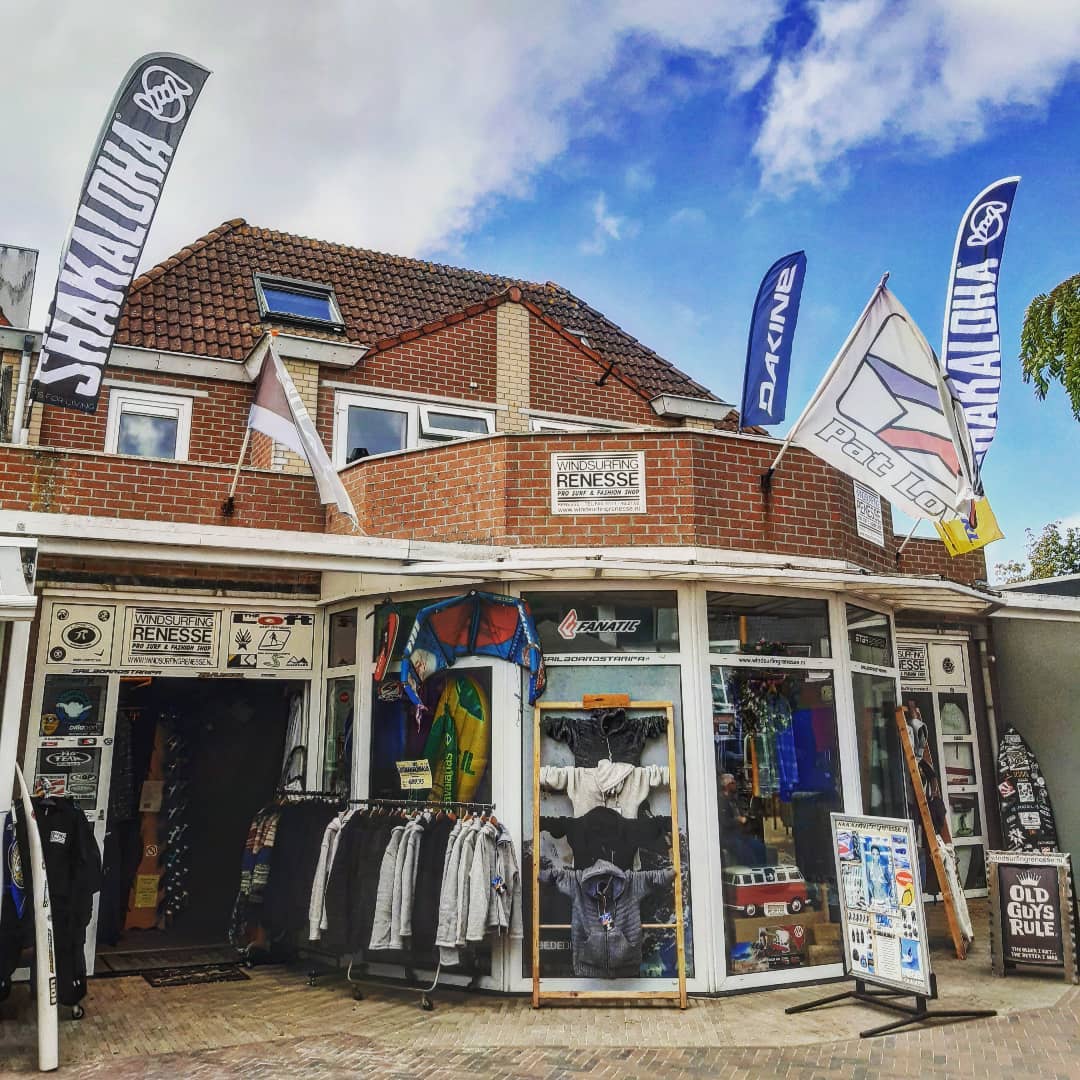







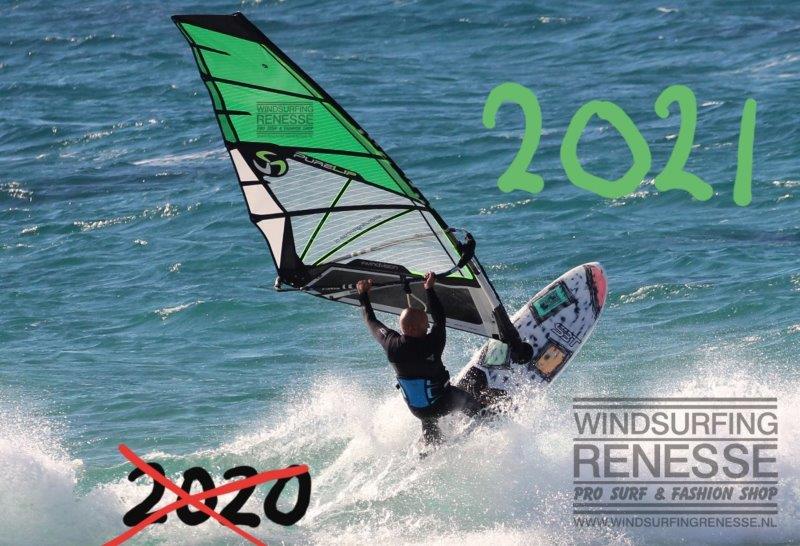
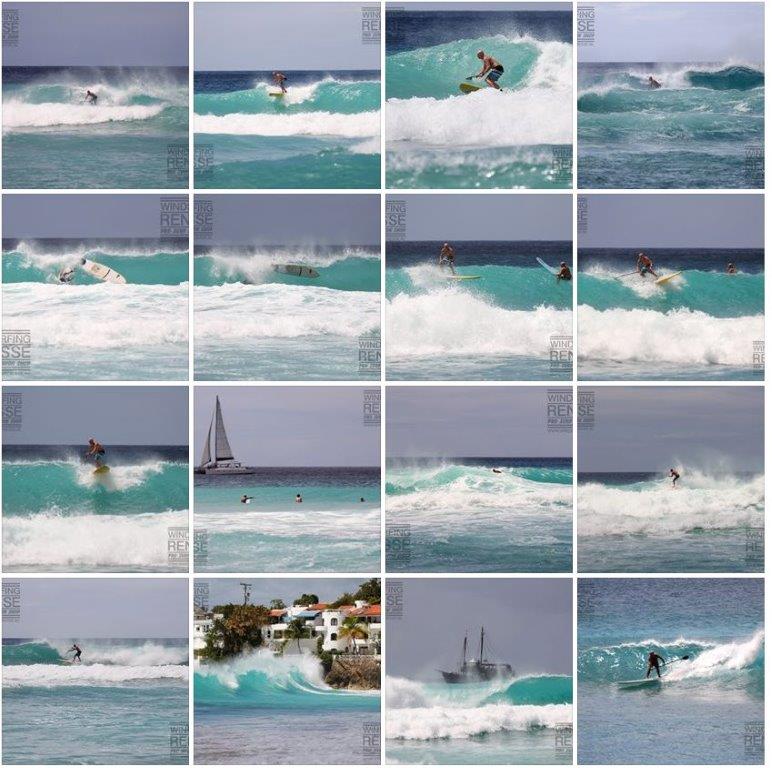
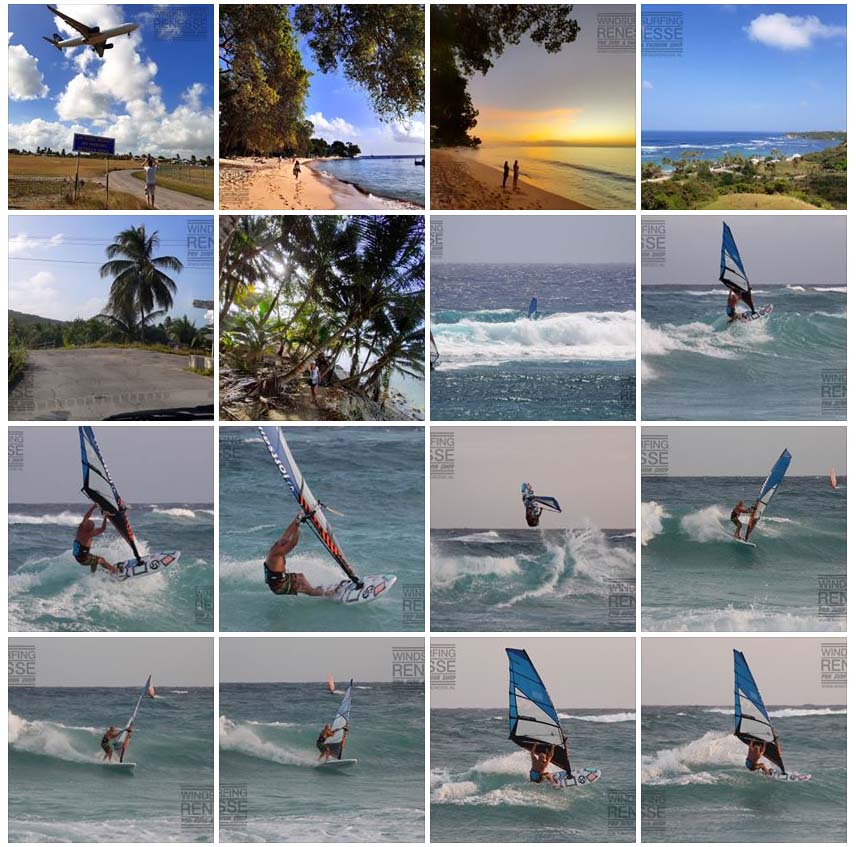
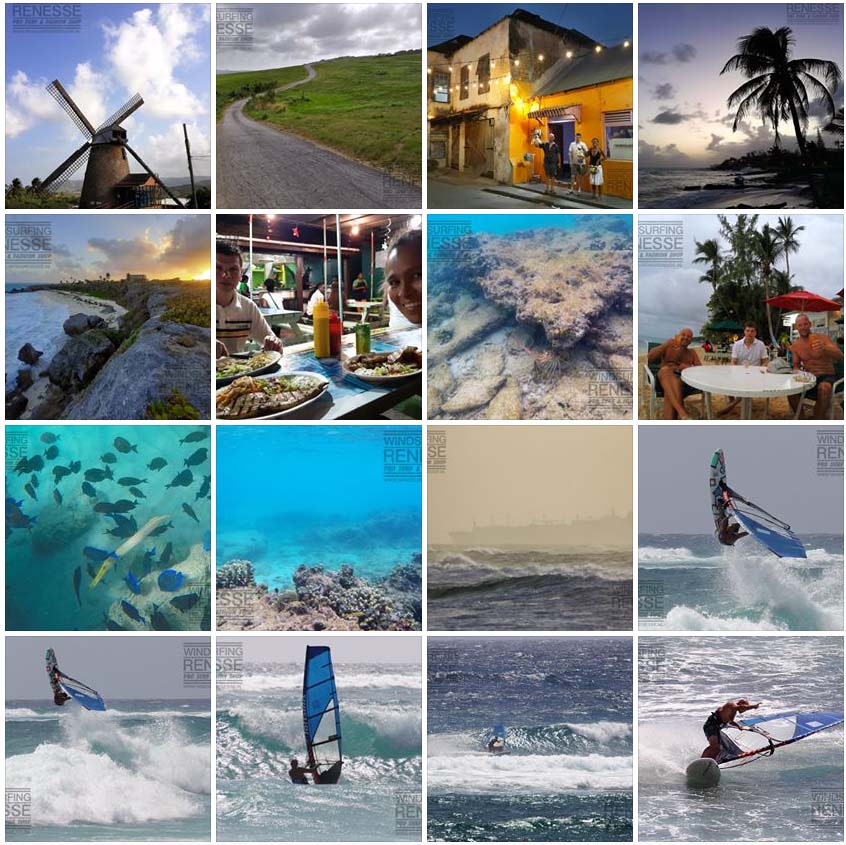
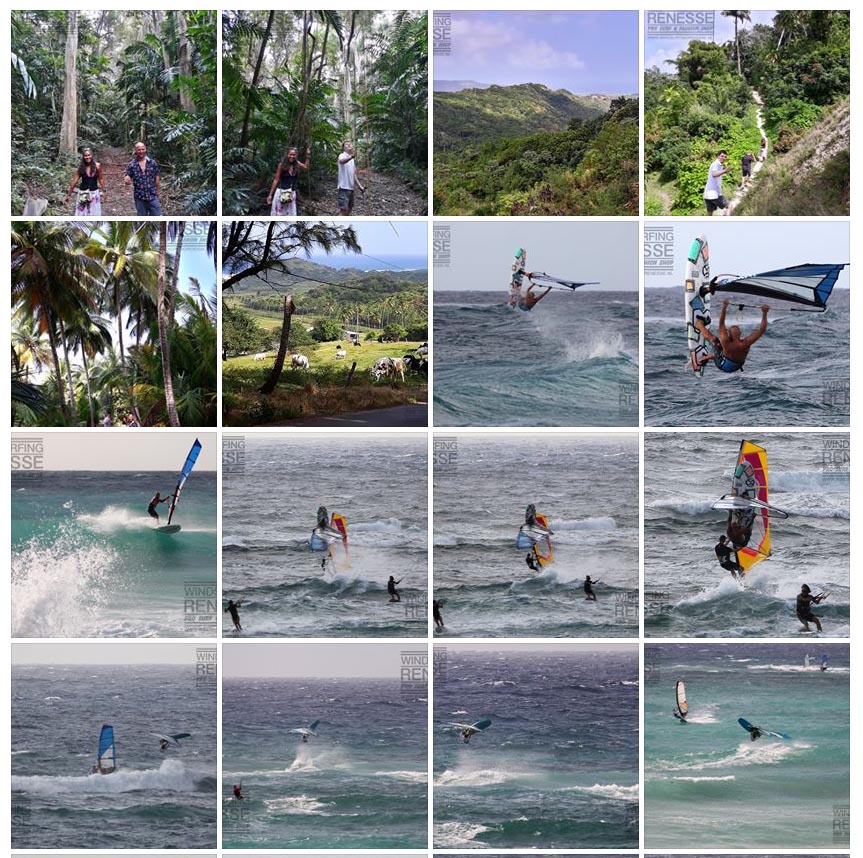
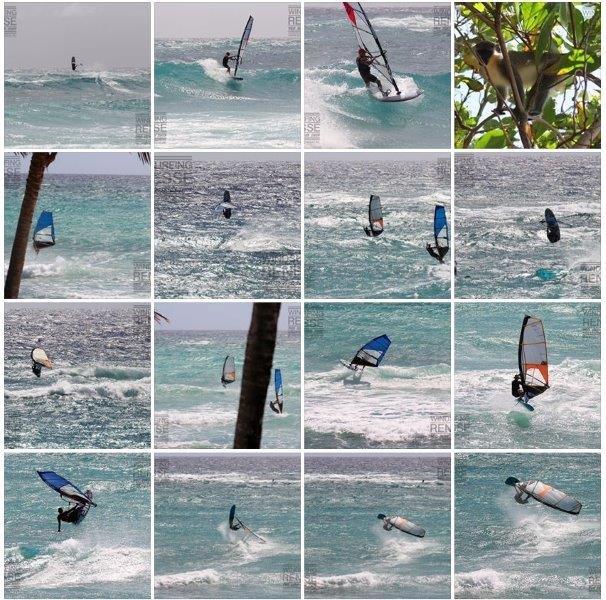
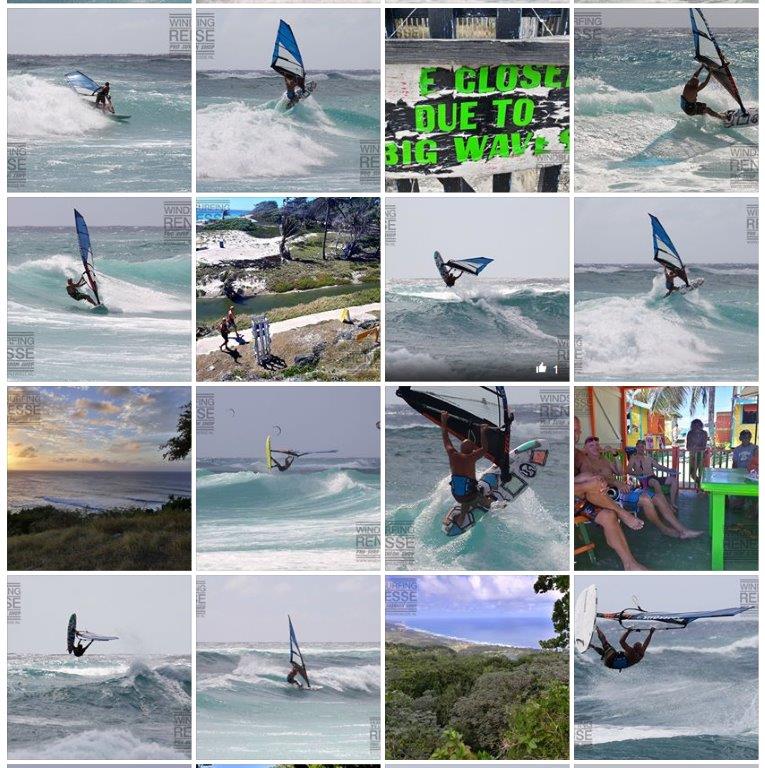
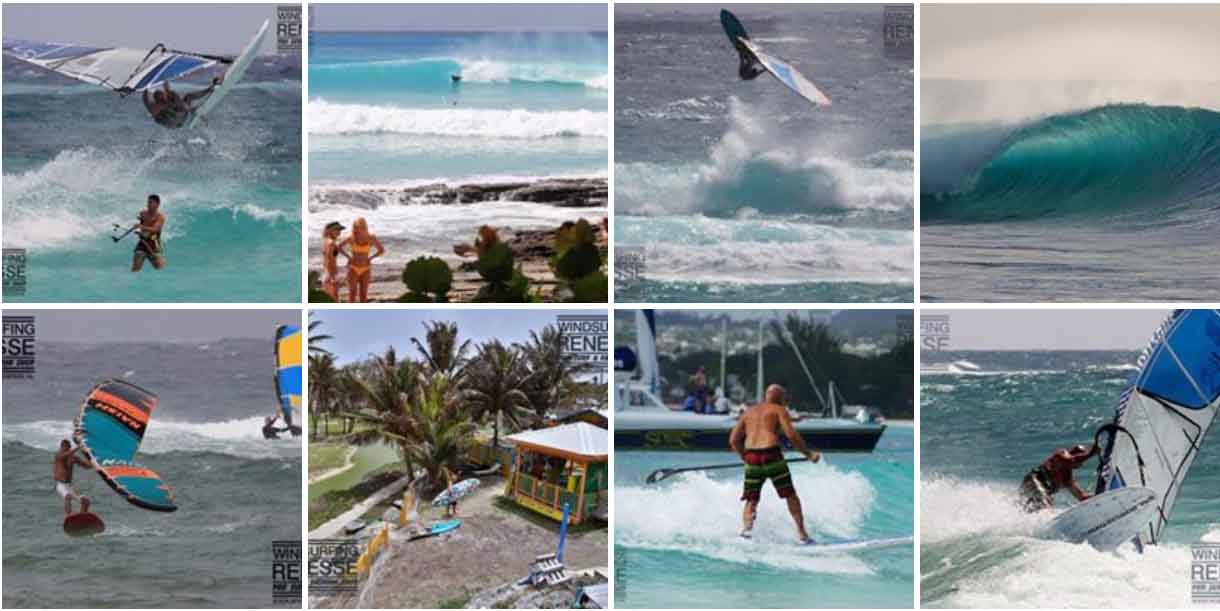
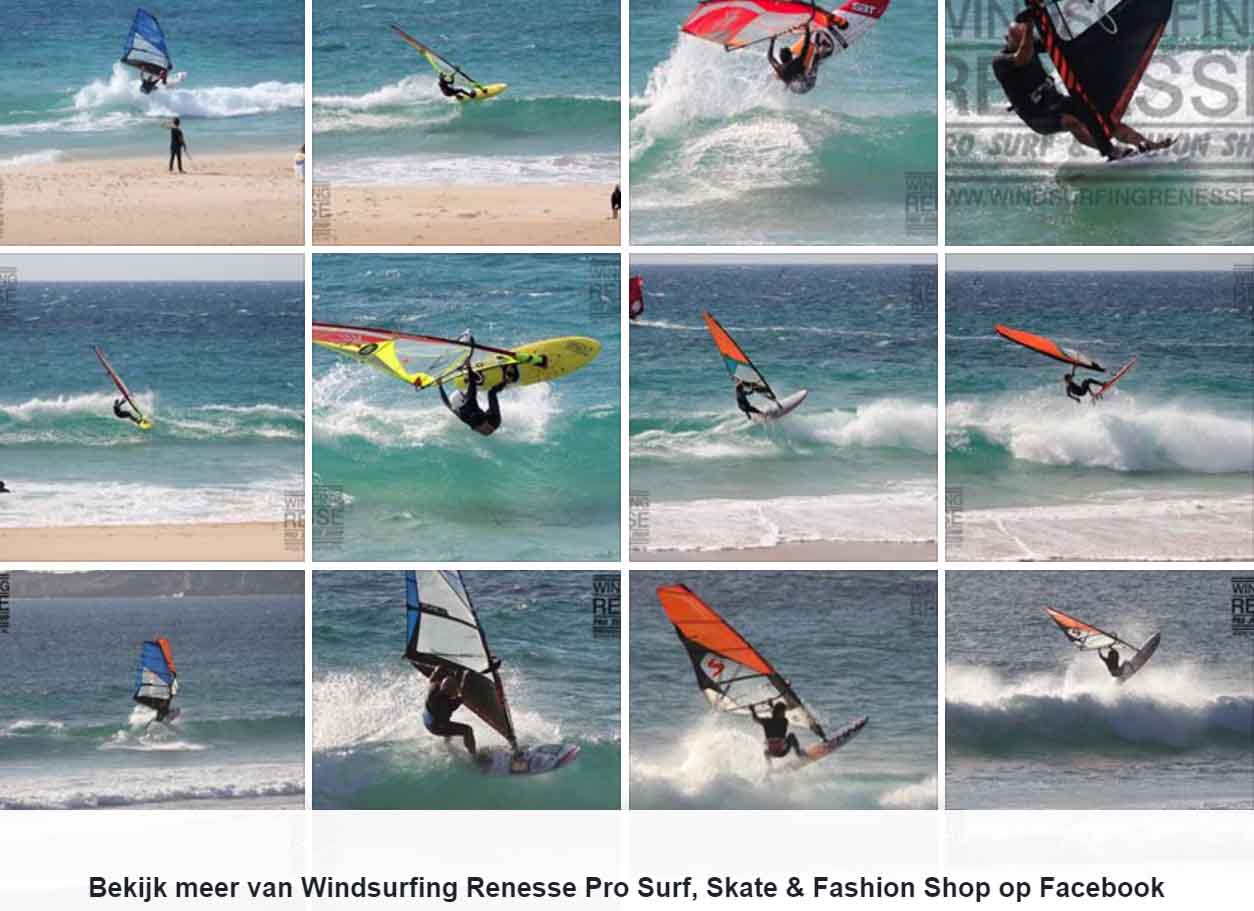
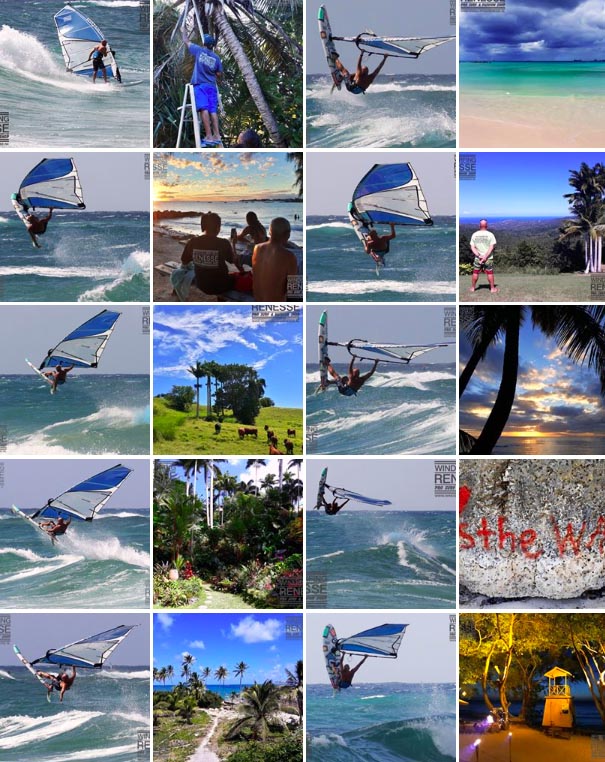
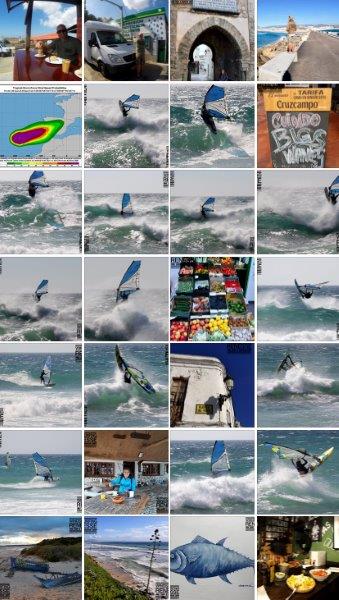
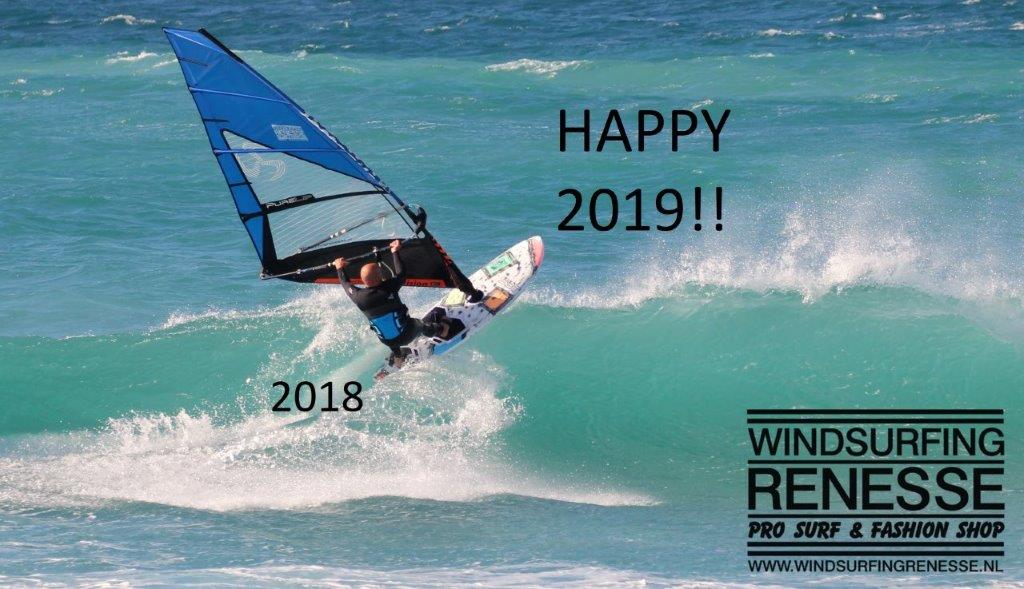
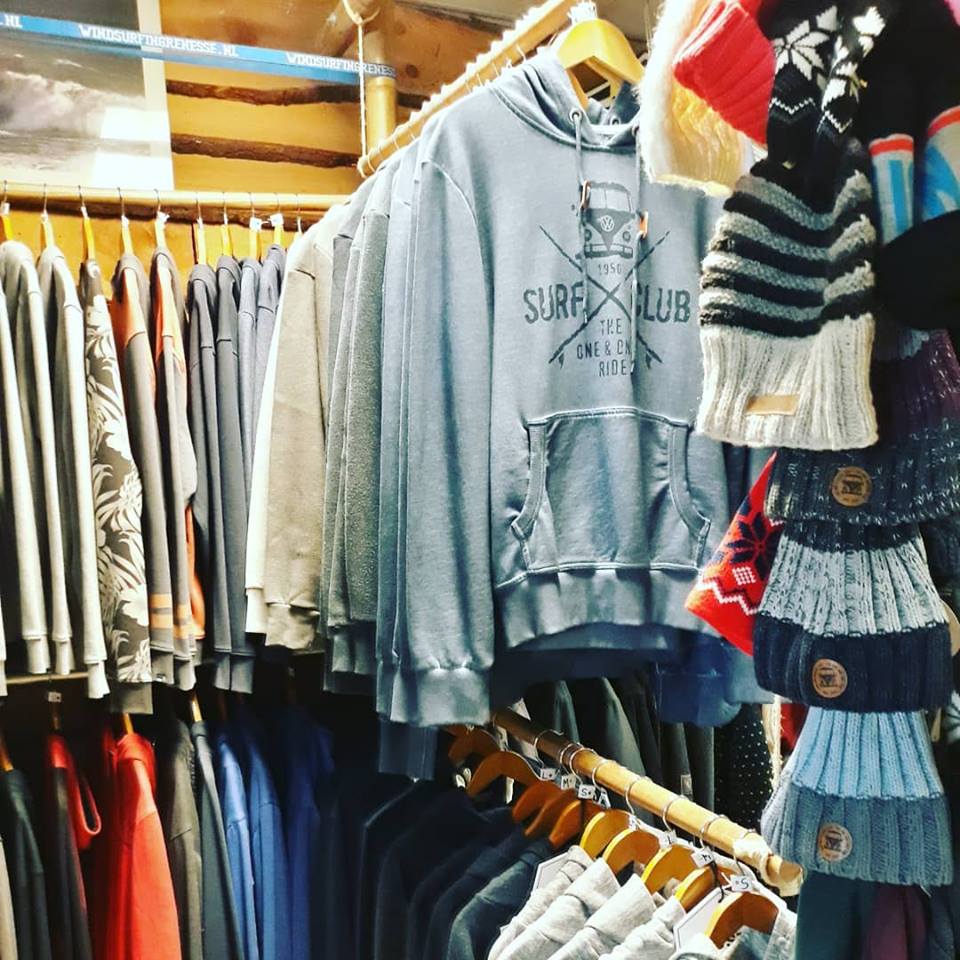
.jpg)
